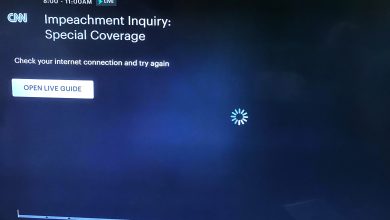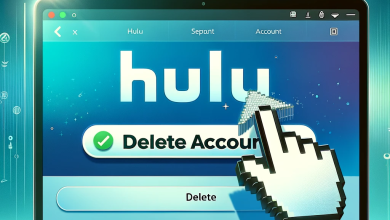How to Fix Hulu Error Code P-DEV323
Some users are starting to see the Hulu Error Code P-DEV323 every time they attempt to steam content on the Hulu platform. Most affected users confirmed that the same problem happens on multiple devices for them.
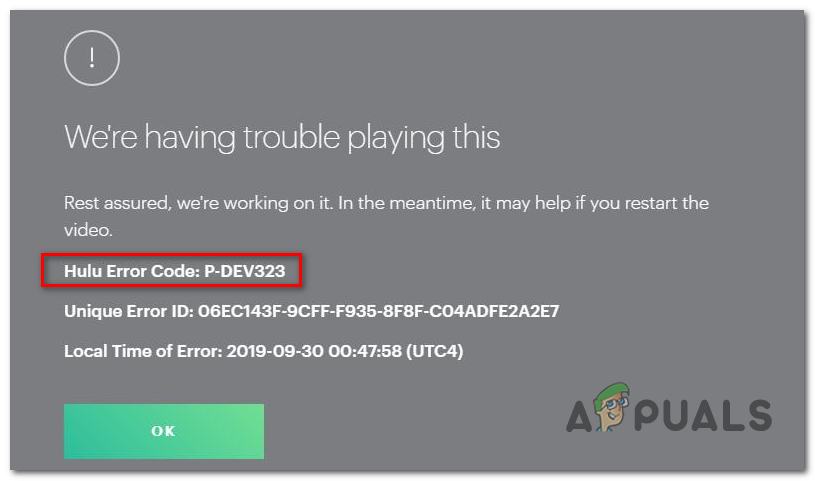
After investigating this particular issue, it turns out that there are several different scenarios that will end up producing this error code:
- Widespread Hulu Server issue – Before you explore any other repair strategies, you should start by making sure that the problem is not actually being caused by a widespread server issue. To make sure that’s not the case, you should use services like DownDetector or Outage.Report and also consult the official Twitter account of Hulu for any official announcements.
- The problem is caused by installed extensions/add-ins – Add-ins and extensions are often the main cause that will end up causing streaming issues with Hulu. To avoid issues of this kind, you should attempt to stream Hulu content from Incognito Mode (Google Chrome) and Private Mode (Mozilla Firefox).
- Interfering AdBlocker – If you’re using an ad blocker that’s installed at a browser level, chances are that’s the reason why you’re seeing this error code. In this case, you should be able to fix this problem by disabling the interfering adblocker.
- Corrupted cache & cookie associated with Hulu – As it turns out, this problem can also occur due to corrupted cache data associated with Hulu. In this case, you should be able to fix this problem by clearing the cache of the browser that you’re actively using.
- VPN or Proxy interference – Keep in mind that Hulu (as well as other streaming services) is notoriously known for not playing nicely with VPN and proxy servers. If you’re actively using one, disable it, or uninstall it all together before attempting to resume the streaming process.
- Conflicting data saved on Hulu’s servers – Under circumstances, it’s possible that conflicting data stored on Hulu’s servers end up interfering with the streaming requests coming from your device. In this case, you need to open a support ticket with Hulu and ask them to erase your device history.
Method 1: Checking the server status of Hulu
Before going with any of the other fixes below, you should start by ensuring that the issue is not beyond your control. In the past, the P-DEV313 error code (and a few others) have occurred due to some unexpected outage periods that ended up affecting Hulu’s streaming servers in certain areas.
So before doing anything else, start by checking if the worldwide Hulu service is experiencing service problems. You can do this by using services like DownDetector or Outage.report to verify if other Hulu users in your area are currently dealing with the same error code.

Even if the investigation you just did didn’t reveal any underlying issues with the streaming service, you should also check Hulu’s official Twitter account for any official announcements.
If you just revealed that you are currently dealing with server issues, the only thing you can do is to wait for Hulu’s engineers to fix the problem remotely.
Else, if you uncovered no evidence of a server issue, move down to the next potential fix below for in instructions on fixing the issue locally.
Method 2: Using Incognito Mode or Private Mode
As a lot of affected have reported, the go-to fix for the majority of users that encountered this error code on a PC is to use the Incognito Mode / Private Mode. This will serve as a proper workaround if the problem is being caused by an extension or add-in installed on your browser.
On Chrome, you can utilize the Incognito mode by clicking the action button (top-right corner), then choosing New Incognito Window from the context menu that just appeared.
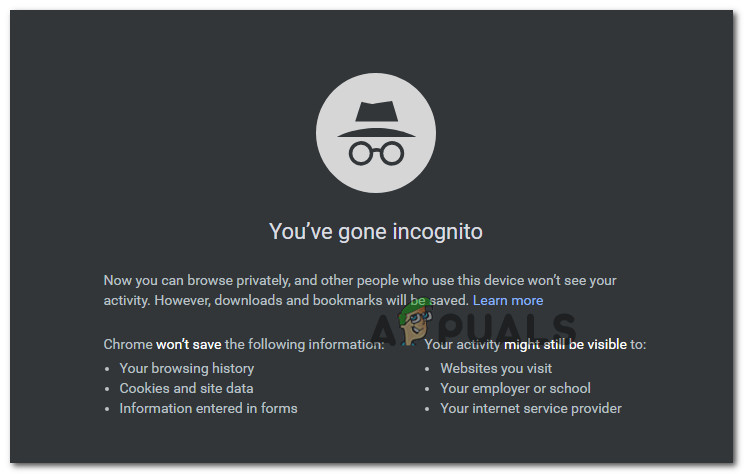
Note: If you’re using Mozilla Firefox, you can open the equivalent of an incognito window (Private Window) by clicking on the action button and clicking on New Private window from the newly appeared context menu.
Once you have successfully entered Incognito Mode / Private Window, return to Hulu, sign in with your account, and see if you still end up with the P-DEV323 error code.
In case the same problem is still occurring, move down to the next potential fix below.
Method 3: Disabling the AdBlocker on Chrome (if applicable)
As it turns out, a lot of affected users that were encountering this problem while attempting to stream Hulu content from Google Chrome have discovered that the problem was actually caused by AdBlocker.
As it turns out, Hulu doesn’t play well with ad-blocking services and will deny streaming access because of it. Keep in mind that Hulu isn’t the only one – Netflix, HBO GO/Max, and Amazon Prime are configured to do the same thing.
If this scenario is applicable, the only way to resolve the problem is to disable the ad-blocking extension. But keep in mind that depending on your browser of choice, this operation will be different.
- On Chrome, you can do this by typing ‘about:addons’ inside the navigation bar and pressing Enter. Then locate the ad-blocking extension and either disable it conventionally or remove it for good if you have no use for it.
- On Mozilla Firefox, you need to type in ‘about:addons‘ inside the navigation bar and press Enter. Next, you need to either disable or uninstall the AdBlocking add-in from the add-in menus.

If this scenario is not applicable or you already disabled the add-in or extension without success, move down to the next potential fix below.
Method 4: Clearing browser cache & cookies (if applicable)
According to some affected users that have received their troubleshooting steps directly from Hulu’s support agents, this can also be a cache problem. After clearing the cache and cookies related to Hulu, some users have confirmed that the issue was resolved.
Of course, the exact steps of doing this will be different from browser to browser. Because of this, we’ve created step-by-step guides for the 5 most popular browsers according to their market share (Google Chrome, Firefox, Opera, Edge, and Internet Explorer)
Here’s how to clear the cache & cookies on all the most popular windows browsers.
Once you have successfully cleared the cache of the browser that is triggering the P-DEV313 error code, reboot your computer and see if the issue is now resolved.
In case the same problem is still repeating, move down to the next potential fix below.
Method 5: Disabling VPN or Proxy server
As it turns out, this problem can also occur due to the fact that Hulu is incompatible with a lot of proxy filtering techniques and system-level VPNs. Keep in mind that this is not exclusive to Hulu – Netflix, HBO Go, HBO Max, and Disney+ have the same problem.
If this scenario is applicable and you’re filtering your home network through a proxy server or a VPN network, you will likely need to turn them off or uninstall them before you will be able to get rid of the P-DEV313 error code.
To help you with this process, we’ve created 2 different guides that will help you disable a VPN network or proxy server.
A. Disabling the Proxy server
- Press Windows key + R to open up a Run dialog box. Next, type ‘inetcpl.cpl‘ inside the text box and press Enter to open up the Internet Properties tab.
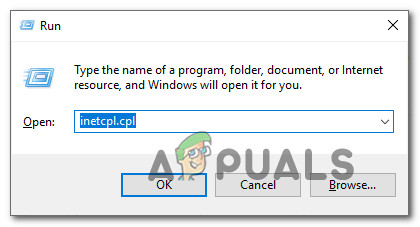
Opening the Internet Properties screen - Once you’re inside the Properties tab, access the Connections tab (from the menu on the top), then click on the LAN Settings (under Local Area Network LAN settings).

Open LAN settings in Internet Options - Once you’re inside the Settings menu of LAN (Local Area Network), scroll down to the Proxy server category and uncheck Use a proxy server for your LAN box.

Disabling the use of a proxy server - Once the proxy server has been successfully disabled, restart your computer and see if the problem is resolved at the next startup.
B. Uninstalling the VPN Client
- Open up a Run dialog box by pressing Windows key + R. Next, type ‘appwiz.cpl’ inside the text box, then press Enter to open up the Programs and Features screen.
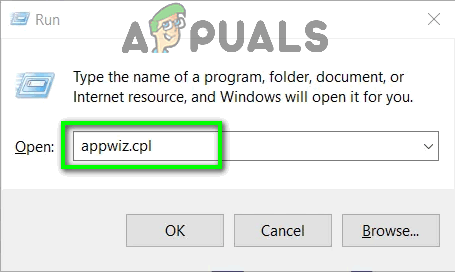
Type “appwiz.cpl” into the Run dialog and press Enter Note: When you’re prompted by the User Account Control (UAC) prompt, click Yes to grant admin access.
- Once you’re inside the Programs and Features menu, scroll down through the list of installed programs and locate the VPN client that you suspect might be causing the issue. When you finally see it, right-click on the entry associated with it, then choose Uninstall from the newly appeared context menu.

Disabling all VirtualBox adapters - Follow the on-screen prompts to complete the uninstallation, then restart your computer and see if the problem is fixed once the next startup is complete.
- Once your computer boots back up, attempt to stream content from Hulu once again and see if the problem is now resolved.
In case you’es still stuck with the same p-dev323 error message, move down to the next potential fix below.
Method 6: Contacting Hulu Support
If none of the methods above have worked for you and you’re still encountering the error code P-DEV313 every time you attempt to stream content from Hulu, your only choice left is to get in contact with Hulu support.

Once you’re inside the support page, ensure that you are signed with the same account that you’re encountering issues with before opening up a support ticket.
As some affected users have reported, this problem might occur due to some type of conflicting data saved on Hulu servers that makes the streaming server block the device that you’re currently attempting to stream from.
According to some affected users that also encountered the p-dev323 error code, Hulu support ended up resetting the account data stored on their servers which ended up fixing the problem.

